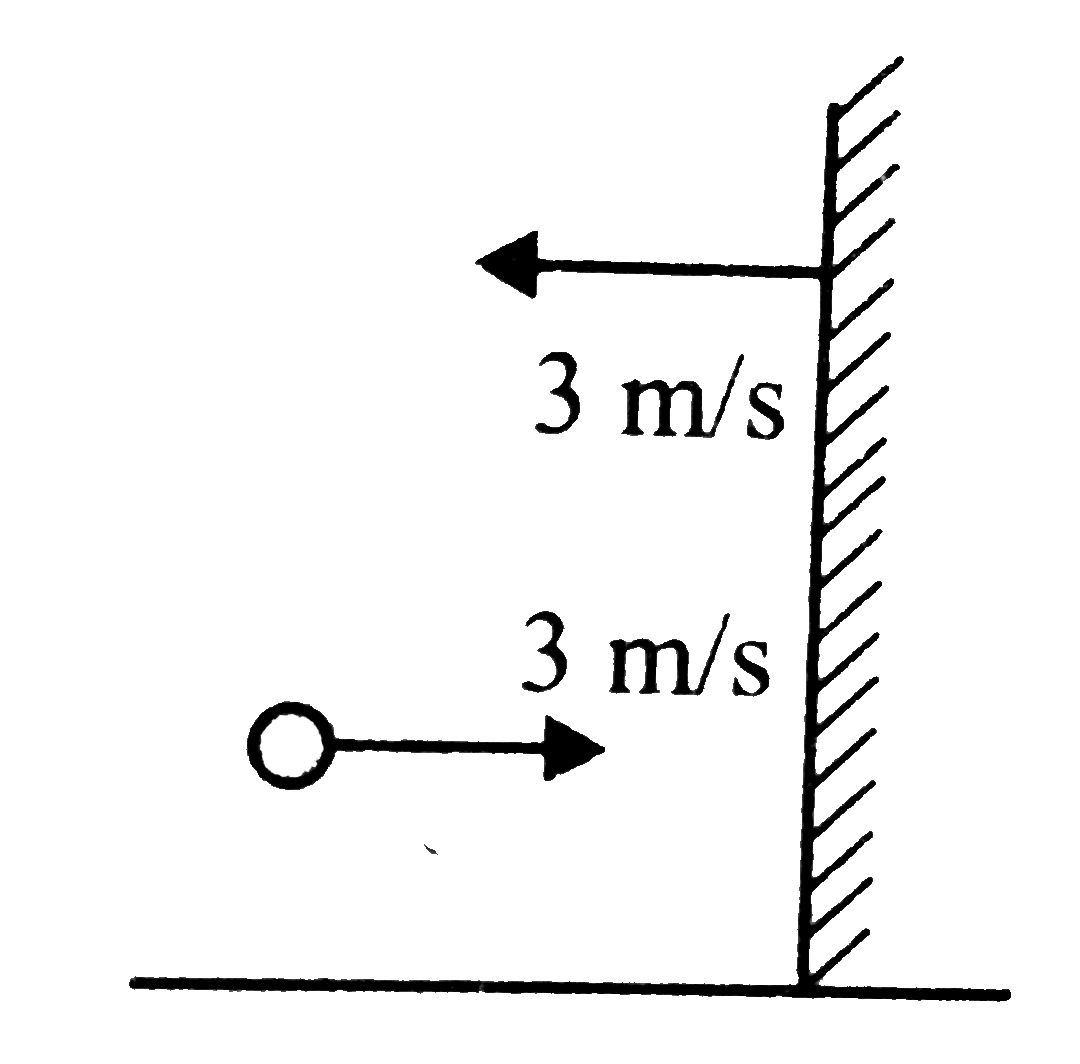If a skater of weight 3 kg has initial speed 32 m / s and second one of weight 4 kg has 5 m / s . After collision, they have speed (couple) 5 m / s . Then the loss in K.E. is
48 J
96 J
Zero
None of these
The correct Answer is:D
Loss in K.E= (initial K.E- Final K.E) of system
12m1u21+12m2u22−12(m1+m2)V2
=123×(32)2+12×4×(5)2−12×(3+4)×(5)2
= 986.5J
Topper's Solved these Questions
- WORK , ENERGY , POWER AND COLLISIONBook:ERRORLESS Chapter:WORK , ENERGY , POWER AND COLLISIONExercise:Critical Thinking (Objective Questions)
Explore 20 Videos
- WORK , ENERGY , POWER AND COLLISIONBook:ERRORLESS Chapter:WORK , ENERGY , POWER AND COLLISIONExercise:Graphical Questions
Explore 28 Videos
- WORK , ENERGY , POWER AND COLLISIONBook:ERRORLESS Chapter:WORK , ENERGY , POWER AND COLLISIONExercise:Ordinary Thinking (Objective Questions) (Elastic and Inelastic Collision)
Explore 68 Videos
- WAVES AND SOUNDBook:ERRORLESS Chapter:WAVES AND SOUNDExercise:SET
Explore 25 Videos
- WORK, ENERGY, POWER & COLLISIONBook:ERRORLESS Chapter:WORK, ENERGY, POWER & COLLISIONExercise:Assertion
Explore 30 Videos
Similar Questions
Two particles A and B of equal size but of masses m kg and 2 m kg are moving directly towards each other with speeds 21 m/s and 4 m/s respectively. After collision, A moves with a speed of 1 m/s in the original direction. Then:
View SolutionA 20 kg car moving at a speed of 0.5m/s to the right collides head on with a 35 kg car at rest. After cllision, the 35kg car is observed to move to the right with a speed of 0.2m/s. Find coefficient of restitution 'e' and fill 100e in the OMR sheet.
View Solution
Knowledge Check
Two balls A and B having masses 1 kg and 2 kg, moving with speeds 21 m/s and 4 m/s respectively in opposite direction, collide head on. After collision A moves with a speed of 1 m/s in the same direction, then the coefficient of restitution is
A0.1B0.2C0.4DNoneA ball of weight 0.1 kg coming with speed 30 m / s strikes with a bat and returns in opposite direction with speed 40 m / s , then the impulse is (Taking final velocity as positive)
A−0.1×(40)−0.1×(30)B0.1×(40)−0.1×(−30)C0.1×(40)×0.1(−30)D0.1×(40)−0.1×(20)A 60 kg body moving with speed 12 m/s collides inelastically with another body of mass 50 kg moving in same direction with speed 2 m/s. After collision the 50 kg body moves with a speed of 10 m/s. The value of coefficient of restitution (e) is :-
A715B710C916D1519
A highly elastic ball moving at a speed of 3m/s approaches a wall moving towards it with a speed of 3m/s. After the collision. the speed of the ball will be

View SolutionA ball weighing 2 kg and speed 6m/s collides with another ball of 4 kg moving in opposite direction with speed of 3m/s. They combine after the collision. The speed of this combined mass (in m/s) is :
View SolutionA ball weighing 2 kg and speed 6m/s collides with another ball of 4 kg moving in opposite direction with speed of 3m/s. They combine after the collision. The speed of this combined mass (in m/s) is :
View SolutionTwo ball A and B having masses 1kg and 2kg, moving with speeds 21m/s amd 4m/s repectively in opposite direction, collide head on. After collision A moves with a speed of 1m/s in the same direction, then correct statements is:
View SolutionA ball of weight 0.1 kg coming with speed 30 m / s strikes with a bat and returns in opposite direction with speed 40 m / s , then the impulse is (Taking final velocity as positive)
View Solution